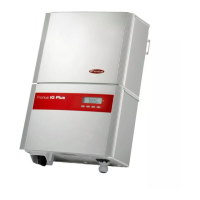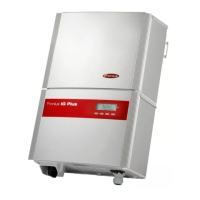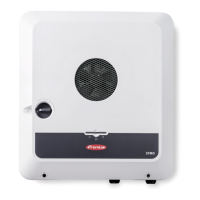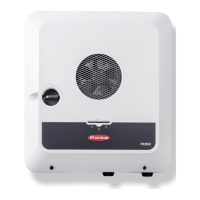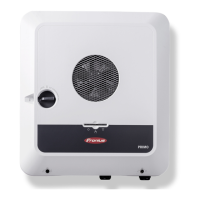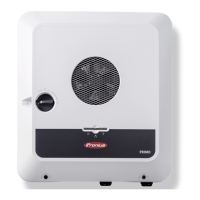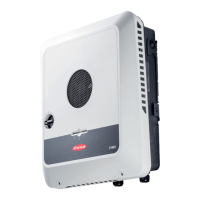34
Connecting Solar Module Strings to the Fronius IG
TL (DC)
Fronius IG TL
field of applica-
tion
General informa-
tion about solar
modules
In order to select suitable solar modules and get the most efficient use out of the inverter,
please note the following points:
- The open circuit voltage of the solar modules increases as the temperature decreases
(assuming constant irradiance). Open circuit voltage may not exceed 850 V.
If the open circuit voltage exceeds 850 volts, the inverter may be damaged, and all
warranty rights will become null and void.
- Note the temperature coefficients in the solar module data sheet
- More exact data for sizing the solar array for the particular location can be obtained
using calculations tools such as the Fronius Solar.configurator (available at http://
www.fronius.com).
Safety
NOTE! The inverter is designed exclusively to be connected and used with non-
grounded solar modules. The solar modules must correspond to protection class
II and class A according to IEC 61730, and they cannot be grounded at either the
positive or negative pole. Use with other DC generators (e.g., wind generators) is
not permitted.
NOTE! Before connecting solar modules, make sure that the voltage specified by
the manufacturer corresponds to the actual measured voltage.
Note the safety instructions and specifications of the solar module manufacturer
regarding solar module grounding.
Solar modules that require a ground at the positive or negative pole cannot be
used with the Fronius IG TL.
WARNING! An electric shock can be fatal. Danger from grid voltage and DC volt-
age from solar modules.
- Never work with live wires! Prior to all connection work, make sure that the
AC and DC wires are not charged.
- Only an authorized electrician is permitted to connect this inverter to the pub-
lic grid.
CAUTION! Danger of damaging the inverter from improperly connected termi-
nals. Improperly connected terminals can cause thermal damage to the inverter
and may cause a fire. When connecting the AC and DC cables, make sure that
all terminals are tightened securely using the proper torque.
CAUTION! Danger of damaging the inverter by overload. Only connect a maxi-
mum of 20 A to an individual DC terminal.
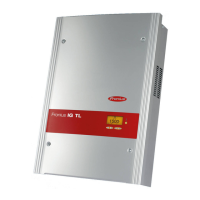
